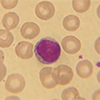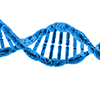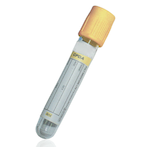Cholesterol
Specimen Volume
5 mL vacutainerSample Preparation
Centrifuge
Turnaround Time
1 daySample Processing In Laboratory
UsualSample Stability
7 days at 2-8°C, 3 months at -20°C
General Information
Cholesterol measurement, alongside HDL, LDL and triglycerides, is used to diagnose and monitor hypercholesterolaemia (monogenic, polygenic and secondary), and to assess cardiovascular risk. In risk assessment, cholesterol measurements should be considered in relation to other risk factors (e.g. cigarette smoking, hypertension, diabetes mellitus, a personal history of cardiovascular disease etc). Raised concentrations should be confirmed with a repeat, together with measurements of other lipids including triglyceride and HDL-cholesterol, and LDL-cholesterol (usually by calculation).
Secondary causes of hypercholesterolaemia must be excluded before initiating specific treatment. Causes of secondary hyperlipidaemia include chronic liver disease (particularly with cholestasis), hypothyroidism, chronic kidney disease, myeloma, alcohol excess (particularly in connection with severe hypertriglyceridaemia), and drugs (steroids, retinoids, anti-retrovirals and tamoxifen can induce significant (usually mixed) hyperlipidaemia).
It is often recommended that diagnosis and treatment should not be based on individual measurements because of the relatively high biological variation.
Patient Preparation
Cholesterol is influenced by inflammation, and so it is better to avoid sampling when the presence of an acute phase response is likely to give misleading results. For example, cholesterol should be measured at the time of admission with chest pain rather than the following day, by which time the concentration may have dropped significantly. It is important to note that this suppression may last several months. Samples for lipids other than cholesterol are best taken after fasting to reduce the influence of recent dietary intake.
Notes
Clinical uses:
1. Screening for hypercholesterolaemia/dyslipidaemia. Concentrations should be interpreted as part of a global cardiovascular risk assessment (refer to https://www.nice.org.uk/guidance/cg181), unless particularly high, in which case other reasons of hypercholesterolaemia should be considered (e.g. familial hypercholesterolaemia: https://www.nice.org.uk/guidance/cg71).
2. Monitoring of treatment – most recommendations suggest treating to a target [cholesterol], particularly for patients with FH or existing cardiovascular disease; measurements are also used for assessing adherence to treatment.
Reference Range
The optimal cholesterol concentration for men and women is <4.0 mmol/L (Joint British Societies Guidelines). The National Service Frameworks for coronary disease recommend a reduction to <5.0 mmol/L for those who are treated for secondary prevention or primary prevention where their risk for cardiovascular disease is >20% over a 10 year period. It is often recommended that diagnosis and treatment should not be based on individual measurements because of the relatively high biological variation. Age, sex, pregnancy etc may affect results and appropriate ranges are reported.
Specifications
-
EQA Status:
NEQAS
- EQAS Scheme: Yes








